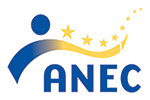- The charges levied for cross-border electronic payment transactions in euro up to EUR 50,000, is the same as the charges levied by the same institution for such payments within the MemberState in which the institution is established to perform the cross-border electronic payment.
- Cross-border payments can be cross-border credit transfers , cross-border electronic payment transactions and cross-border checks.
- For credit transfers , the client informs the institution that performs the transfer, the international bank account number (IBAN – International Bank Account Number) of the beneficiary and the identification code of the bank (BIC – Bank Identifier Code) of the beneficiary. If the customer does not communicate with the institution the above information , the institution may impose an additional charge. In this case , the institution shall give written notice to customers for the additional charges.
- The European Union has adopted rules and measures for the protection and facilitation of cross-border consumer payments up to 50,000 euros.
- We must be informed in writing in advance by financial institutions on the charges imposed on cross-border payments and payments in the MemberState.
- We must be informed in writing and in advance of any change in fees and charges of financial institutions.
1. I want to proceed with a cross border transaction. What shall I do?
Before we proceed with cross border transactions we have to compare the cross-border transaction costs among the various financial institutions to find the most advantageous choice. In addition, we ask to know the international number IBAN of the beneficiary and the BIC code of the banking institution .
2. What is IBAN
With the introduction of Euro in most European countries has become an urgent need to harmonize / standardize the transactions of credit institutions of the Member States of the European Union , with particular emphasis on those involving cross-border payments. The European Payments Council has set a target of improving cross-border payments. This undoubtedly requires a common methodology for identification and confirmation of bank account numbers .
3 . What is the purpose of IBAN
To facilitate the automatic processing of cross-border transfers . By using IBAN ensure proper transmission of the Account Number and limited manual intervention crediting .
4. What is the IBAN and how is created?
The IBAN is a series of alphanumeric characters that uniquely identifies a customer’s account held with any bank worldwide . The shape that IBAN has in Cyprus is the following :
CCDDTTTKKKKKXXXXXXXXXXXXXXXX
where CC: country code , DD: Control bits , TTT: Bank code , KKKKK: Bank branch and 16 -digit account number of the customer.
For example, if a customer’s account number is 5254651004 , then the IBAN is :
In electronic form : CY79006005250000005254651004
In printed format : CY79 0060 0525 0000 0052 5465 1004
IBAN has a fixed number of characters for each country with a maximum of 34 alphanumeric characters . Cyprus has a length of 28 alphanumeric characters.
5. How can I learn the IBAN
Responsible to notify us for the IBAN is the Bank is where we keep the account. Moreover , from 1/7/2005 , each financial institution in which we hold an account states to account statement us (account statement) the international IBAN number and identification code of our banking institution (BIC).
6. How do we use the IBAN
- The IBAN and Bank Identifier Code (BIC) disclosed from the principal to the Bank..
- The beneficiaries transmit the IBAN and the BIC of Bank to the principal.
- The principal transmit to the Bank a cross-border payment order containing the beneficiary’s IBAN and the BIC of the beneficiary’s bank .
- The Bank controls the IBAN and the BIC and sends the payment to the beneficiary’s bank , which credits the account.
7. What is the BIC code
The BIC code is the Bank Identifier Code.
8. What should I do to make a cross-border payment
To make a cross-border payment, we must notify the financial institution with which we work , the IBAN of the beneficiary and the BIC of the financial institution in the MemberState where it is located.
If we move into cross-border transaction we ask to know the international number of our bank account (International Bank Account Number-IBAN) and the identification code (Bank Identifier code-BiC).
9. How can I avoid unwanted charges
In case we want to make a cross-border payment and we do not disclose to the financial institution data about the IBAN and BIC of the beneficiary then the bank can impose on us additional costs.





